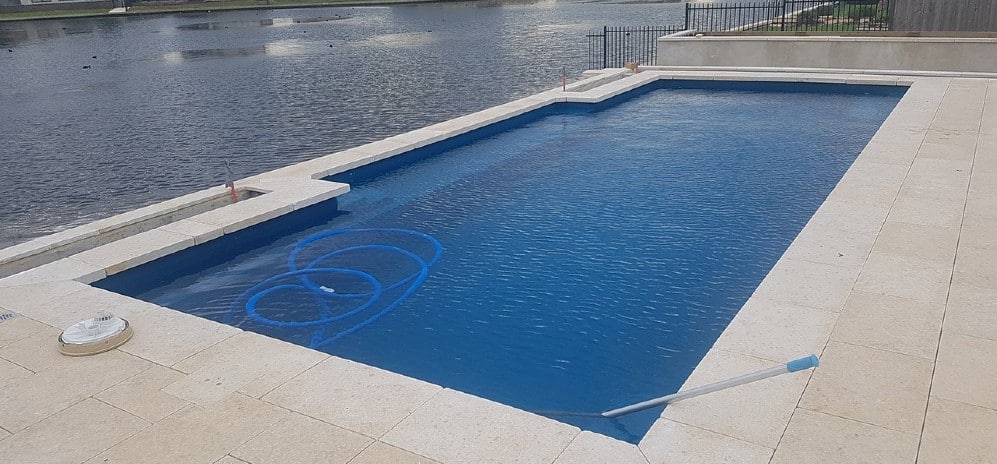
Stone tiles are a high-end material which enhance any home and add value year on year. Limestone and sandstone tiles, in particular, are intriguing to behold, adding depth to living room floors, feature walls and around swimming pools. Natural stone is regarded as highly durable and weather resistant. It requires some care for long term protection, especially against salt. This gritty substance can cause devastating damage to just about any building material – whether it’s metal, concrete or stone. Some stone is more resistant to a salt attack, porous stone such as limestone and sandstone are more susceptible.
What does salt do to natural stone tiles?
Salt water pools and sea spray in coastal areas are most threatening to sandstone and limestone tiles, with damages ranging from pitting and flaking to cracking and fragmentation. This happens when salt moves through the stones tiny pores. This a process referred to as capillary action, with the final step seeing the salt crystalise in the stone. When salt crystalises, it naturally expands causing stress on the surrounding stone.
Can you make natural stone tiles salt safe?
One of the many questions we get when it comes to tile sealers for natural stone tiles is “will it make it salt safe?”. A premium quality stone coupled with a sealer will have considerable long-term durability in resisting the ingress of water and salt into the stone. However, the treated stone will not necessarily be “salt safe” for all time. With the right natural stone sealers and the proper pre-care of the stone, you can drastically enhance the durability of stone in a salt water environment.
Caring for limestone and sandstone with stone sealers
A sealer is the first preference for ensuring the longevity of your stone. Yet there are a few considerations and pre-care processes to go through before applying your sealer. The amount of salt already in your sandstone and limestone prior to sealer treatment, the proximity to salt water, the type and concentration of the salts in the nearby water and the type and quality of the stone and sub-soil drainage will all factor into the toughness of the natural stone.
According to sealing experts, Dry Treat, care must be taken not to trap any existing salts just below the surface of the stone before treatment. If the salts are stopped just below the surface of the limestone and sandstone due to not enough sealer being applied, the water will still evaporate. This will leave the salt just under the surface. When the crystals are set, they can exceed the tensile strength of the stone and cause degeneration.
How much sealer will you need to secure your natural stone?
Dry Treat say that this can be worked out by testing a sample piece of stone with the sealing treatment at the recommended application rate. The curing rate (for Dry Treat 40SK™ product) is two weeks. The stone is then broken and soaked in water. The depth of sealer penetration is the section of the surface which does not absorb water. For stone such as sandstone, the treatment will need to go 12mm deep.
Need a sealer or adhesive for your sandstone and limestone tiles? Stone & Tile Studio’s trade centre caters to designers, professional tilers and DIY renovators. We offer a complete service for all your tiling care needs including the entire Dry Treat range. Visit our Zillmere Design Centre today and browse our range of premium quality sandstone and limestone tiles for your next project.
Looking for Inspiration?
Sign up to our monthly newsletter for great ideas and inspiration.
Showroom location
Phone
info@stoneandtilestudio.com.au
Address
Opening Hours
Monday to Friday: 9am to 5 pm Saturday: 9 am to 2 pm

